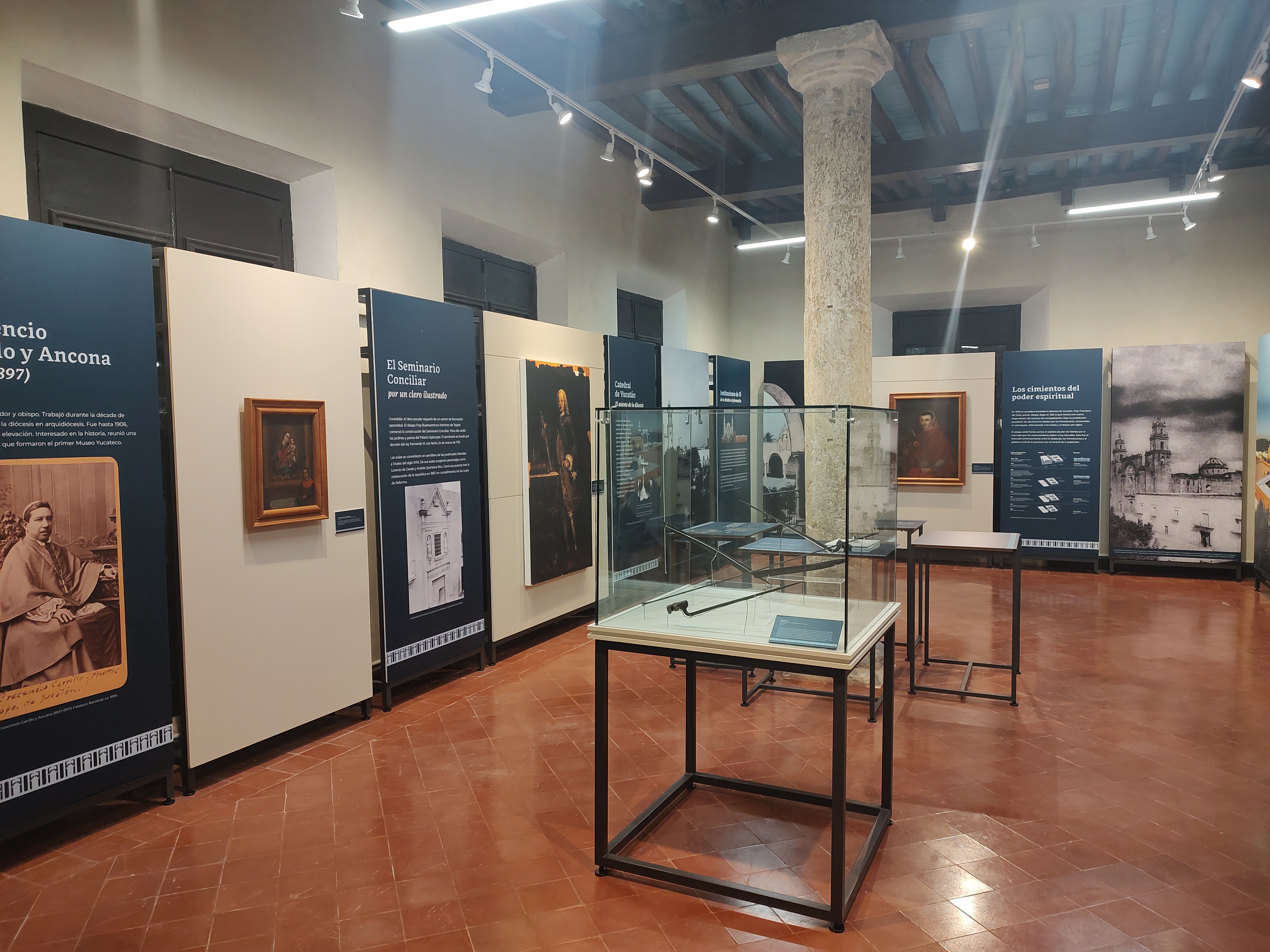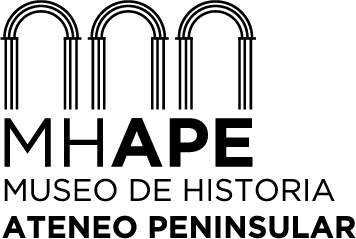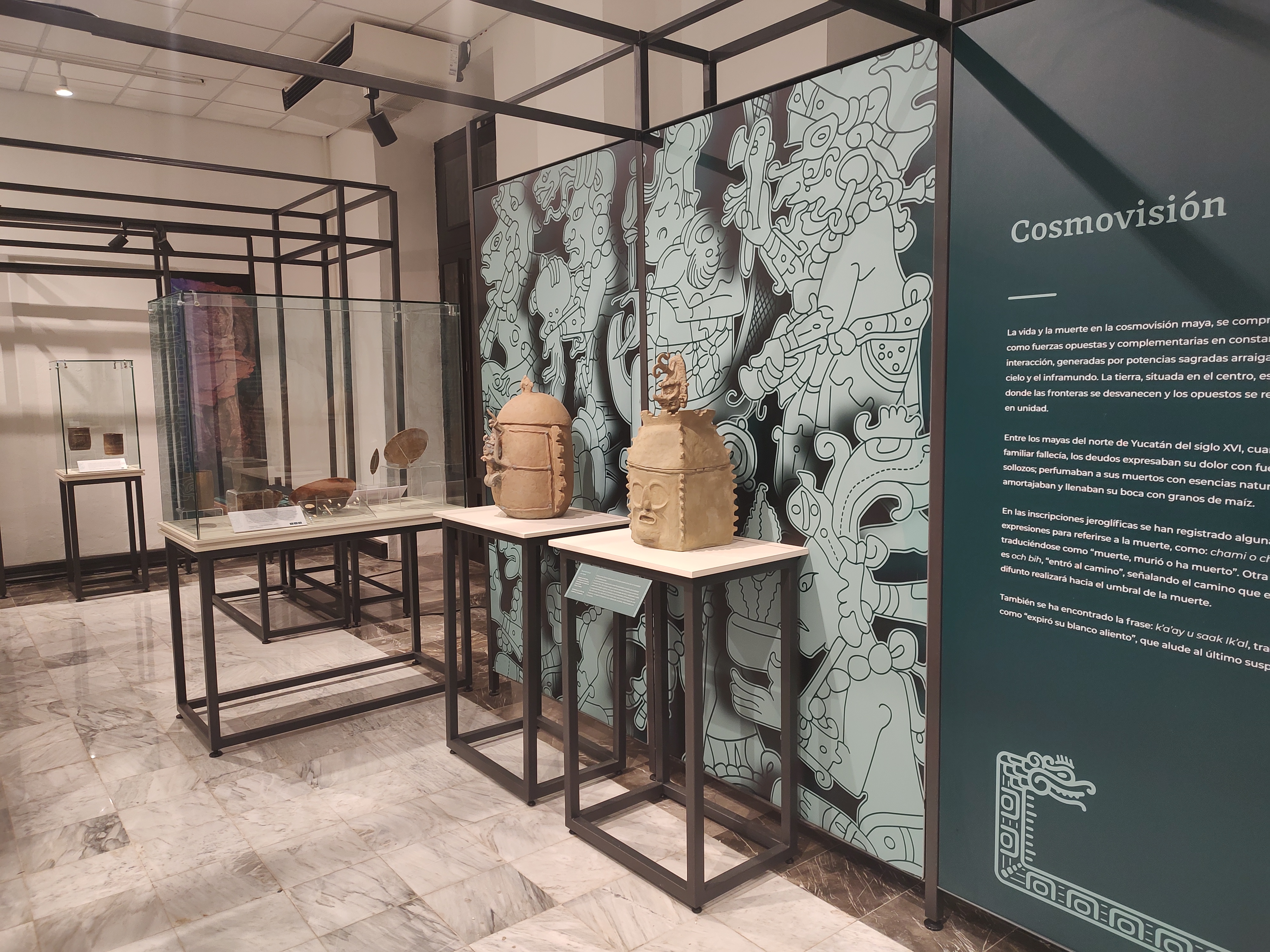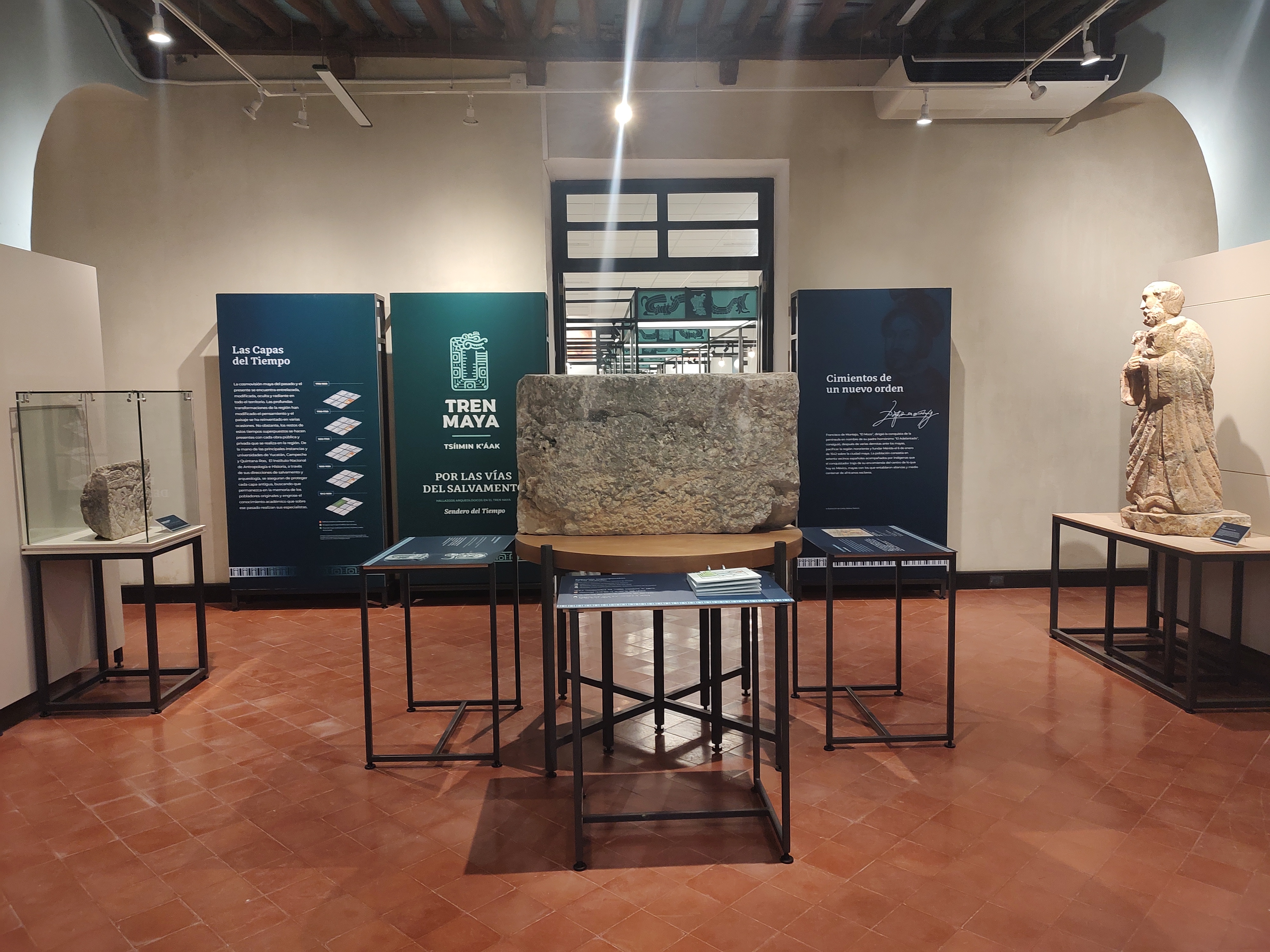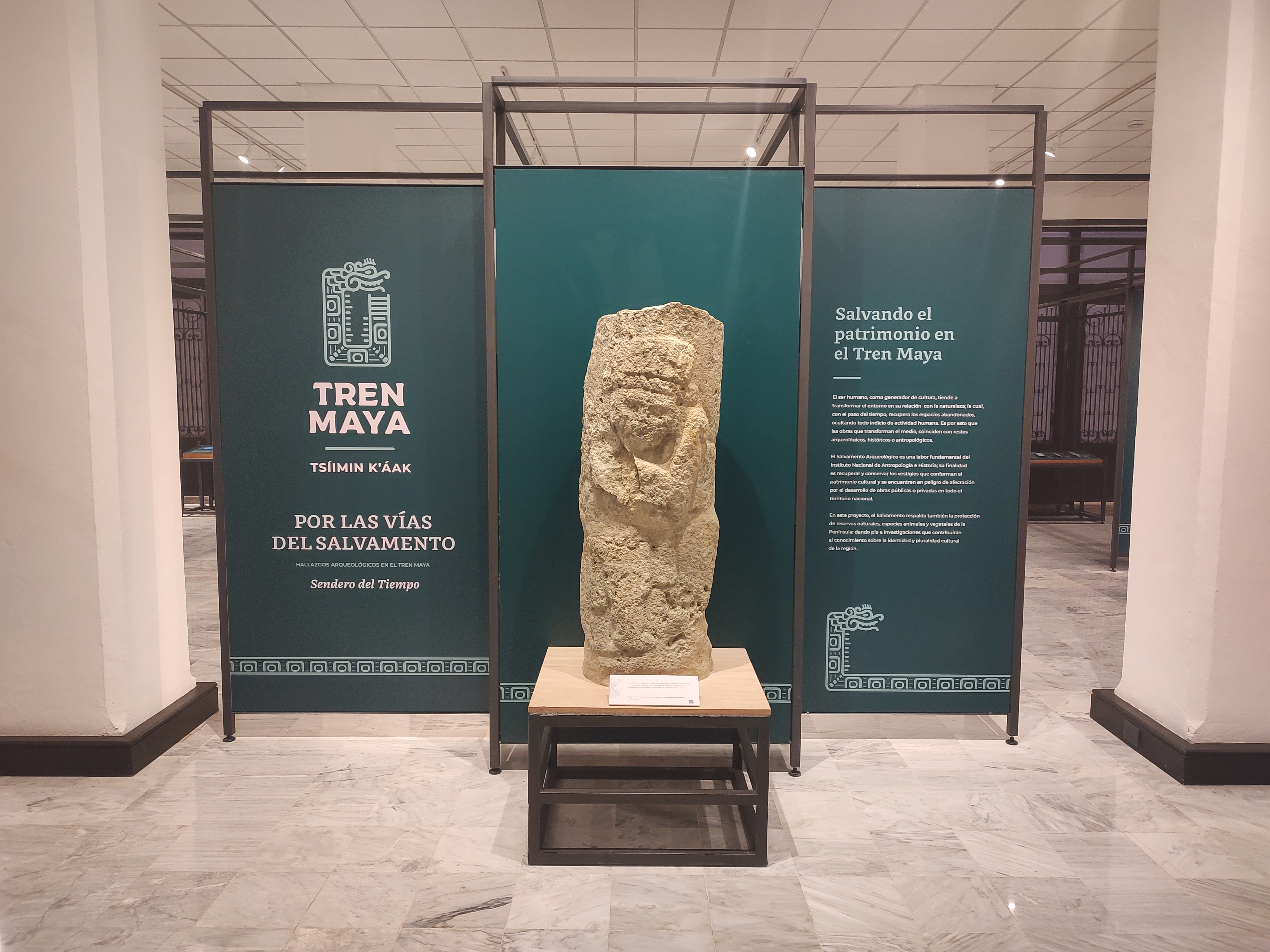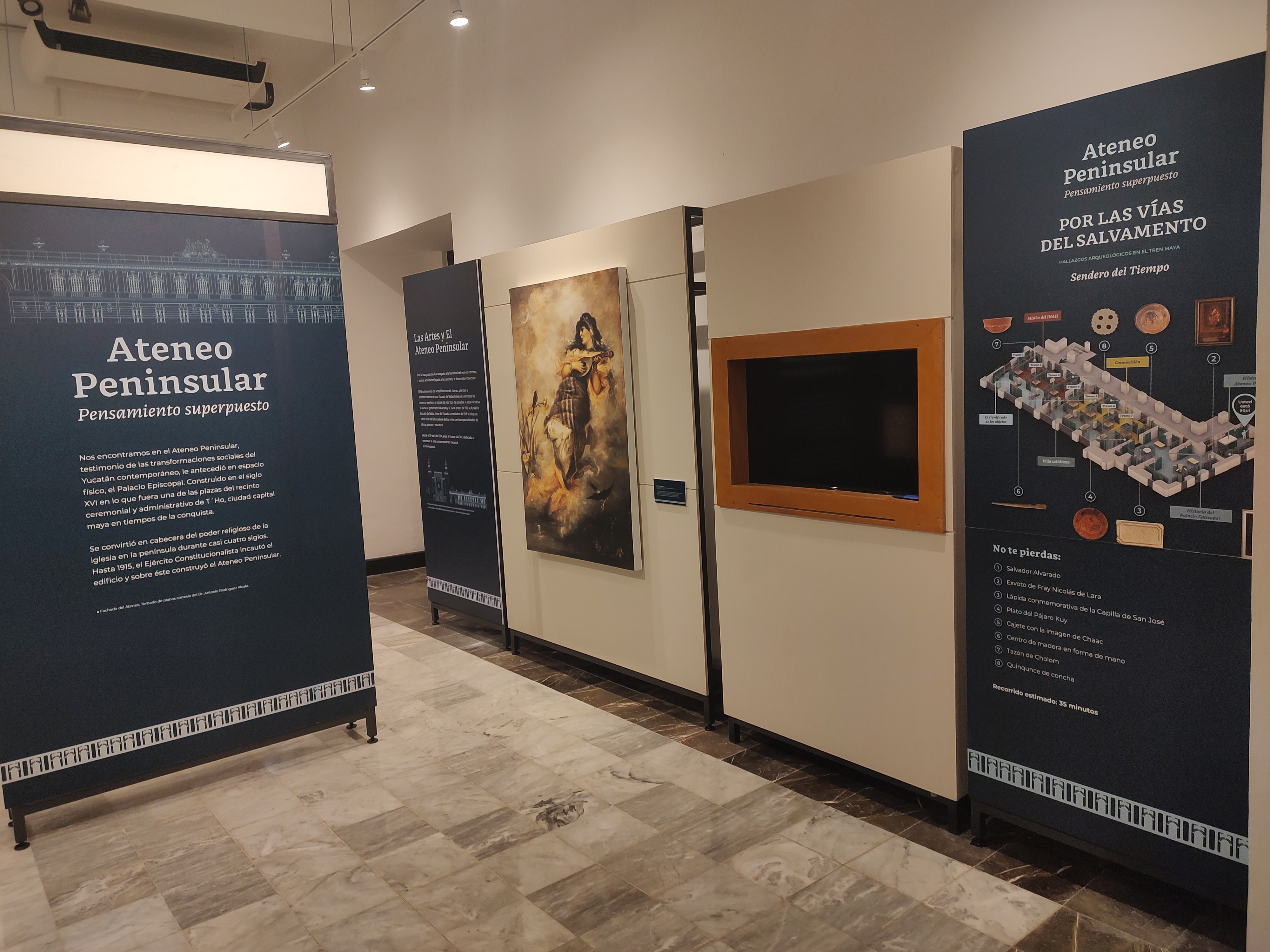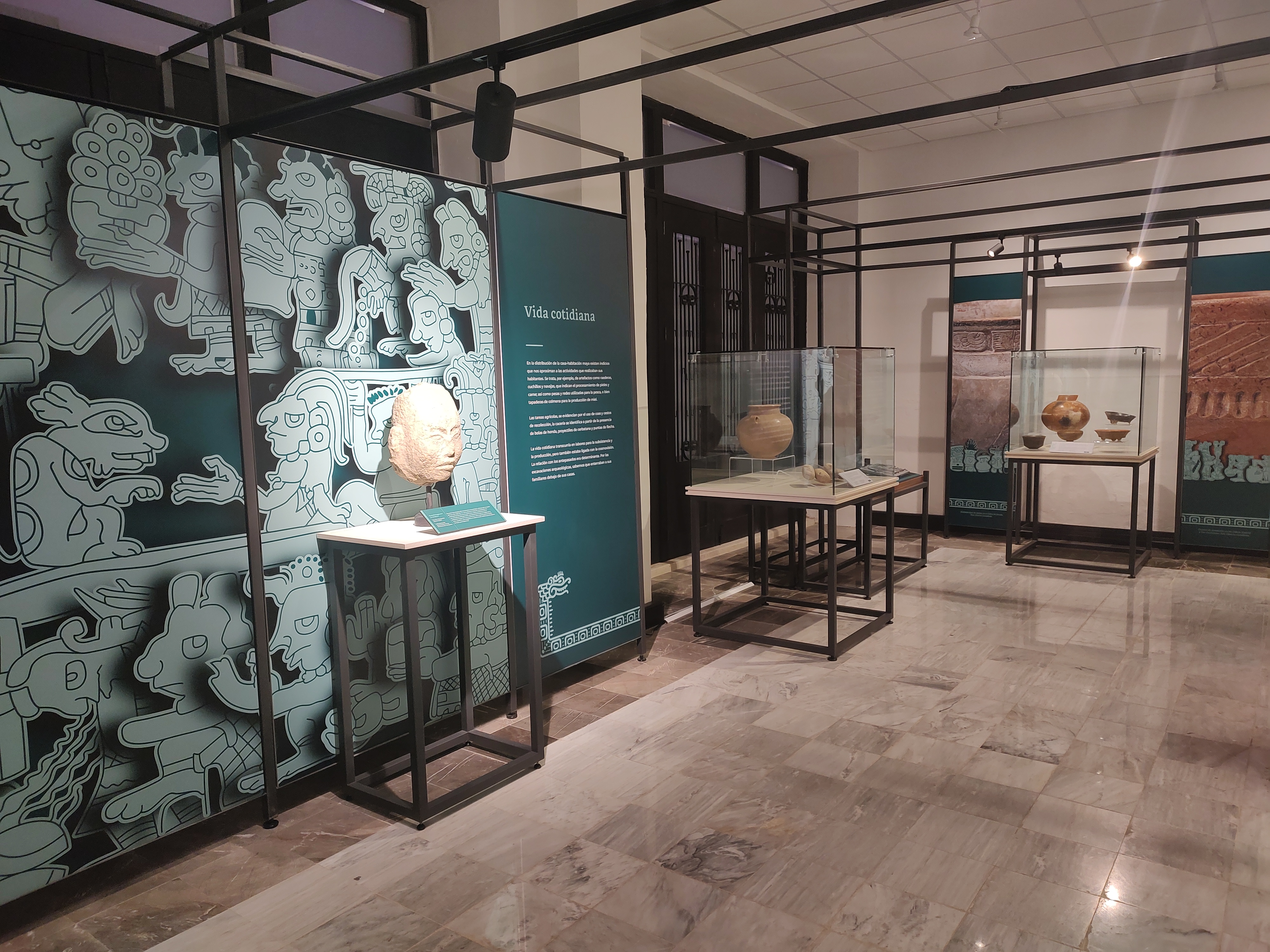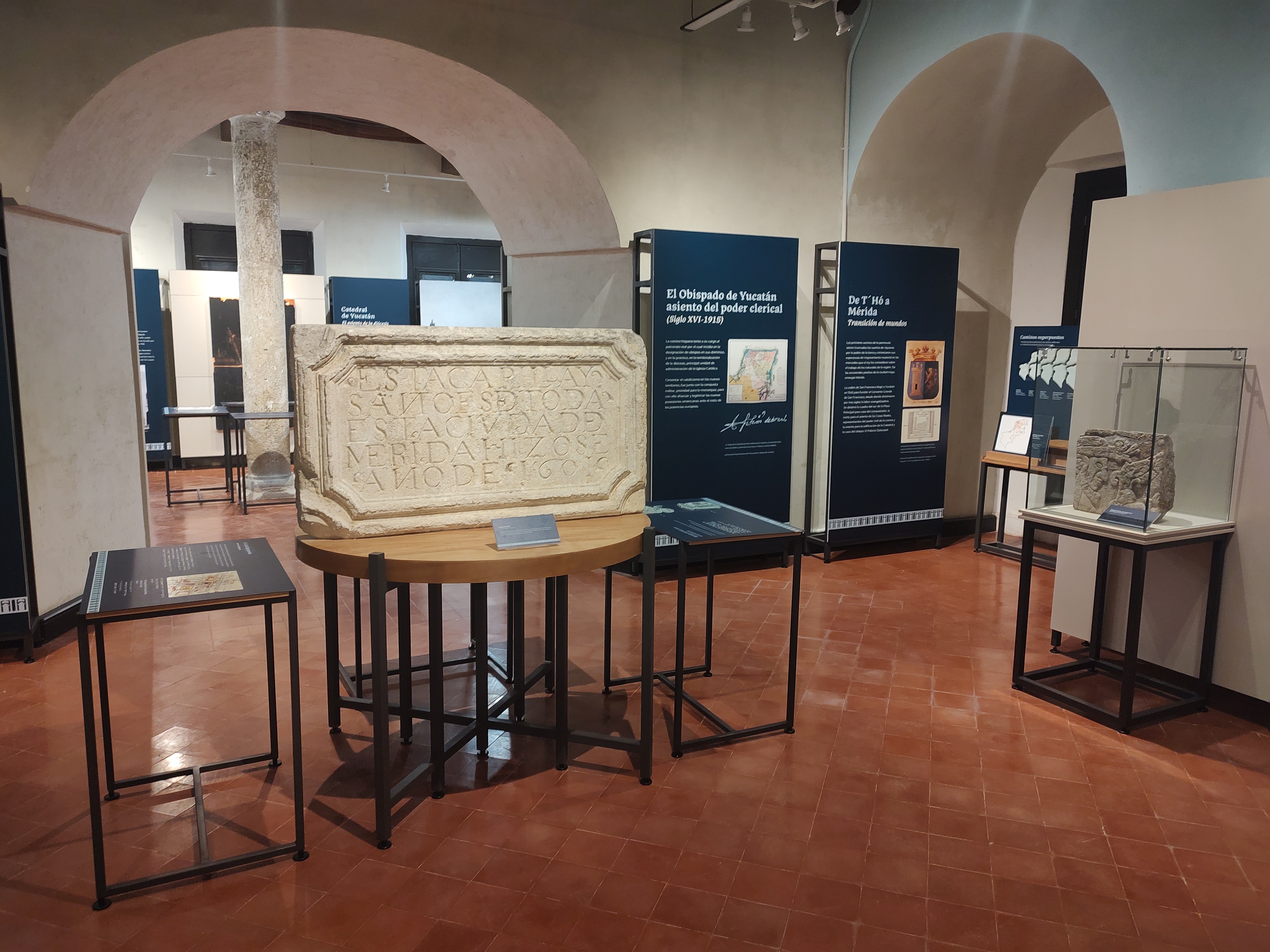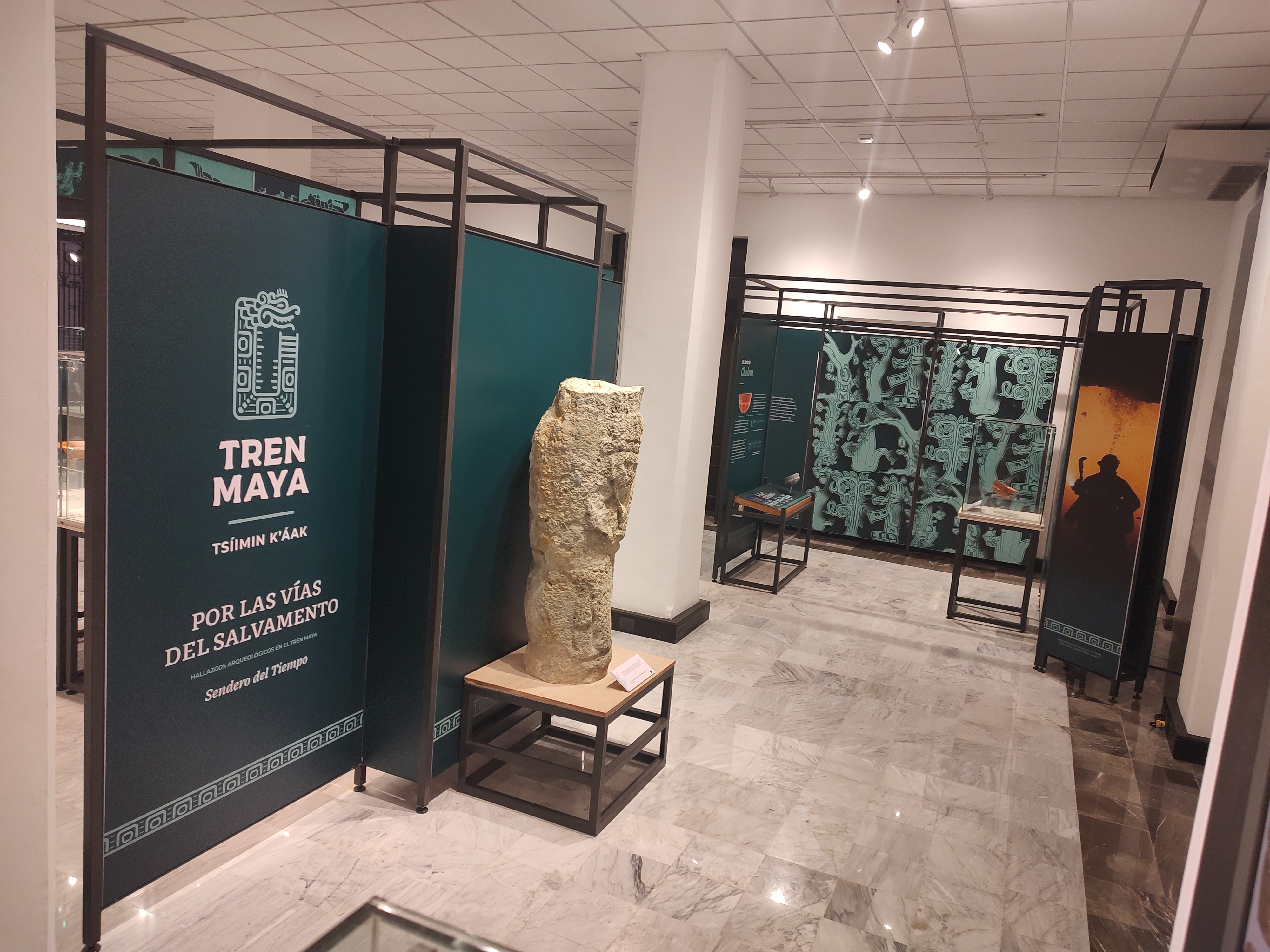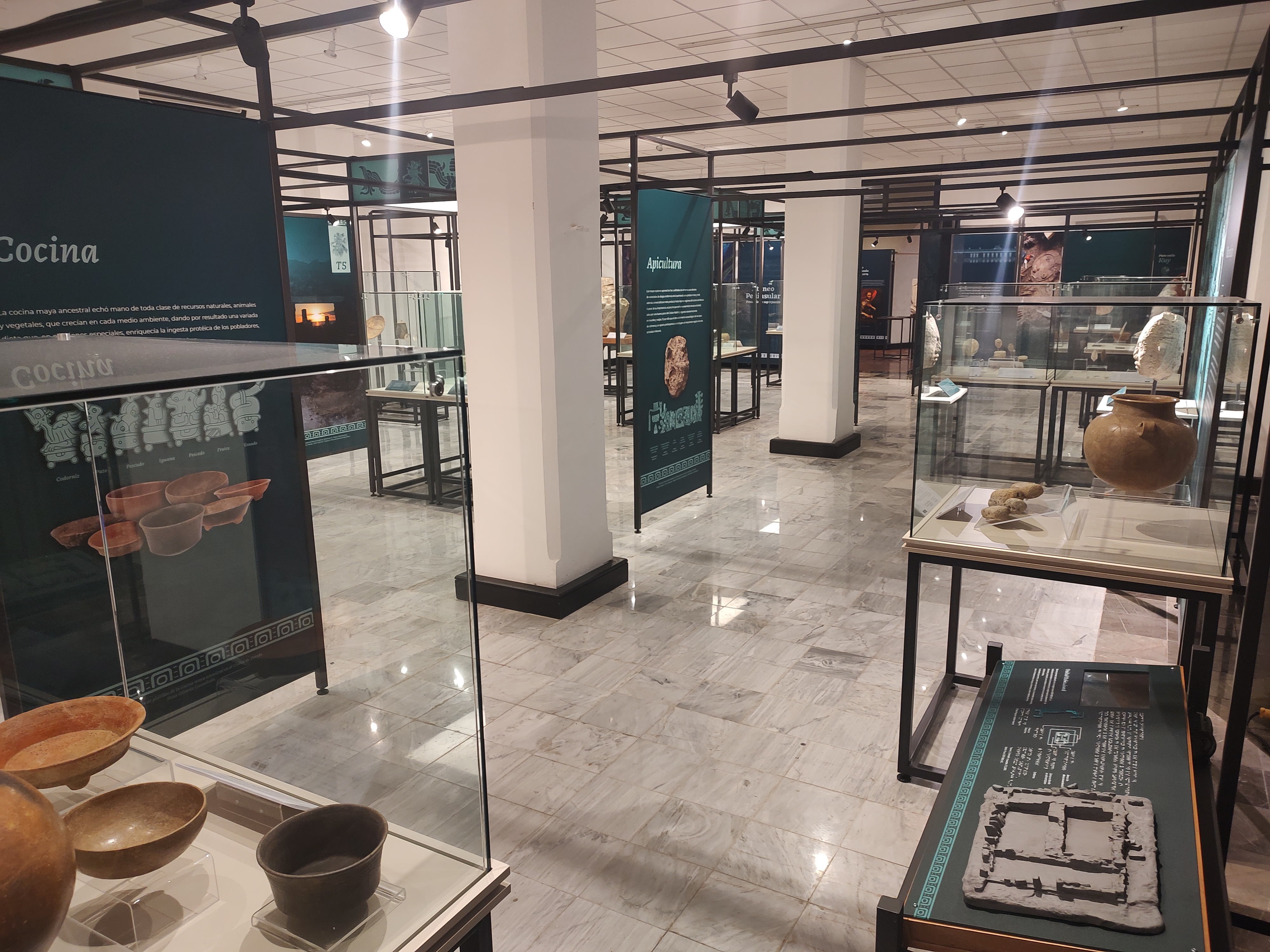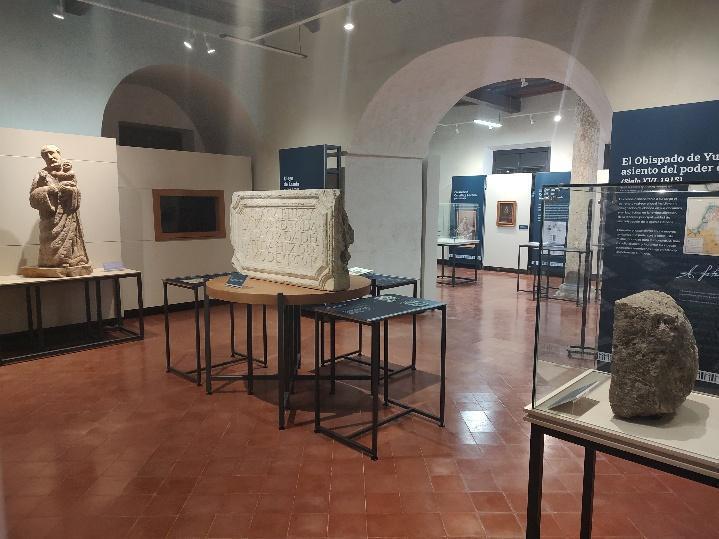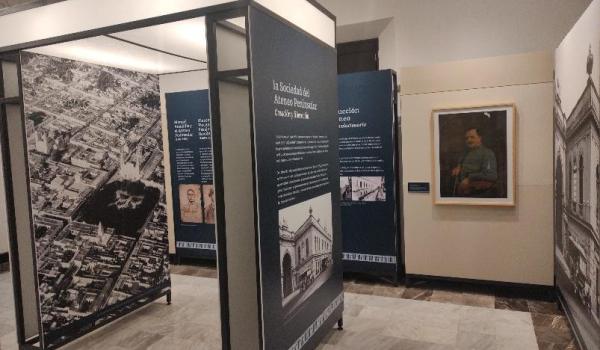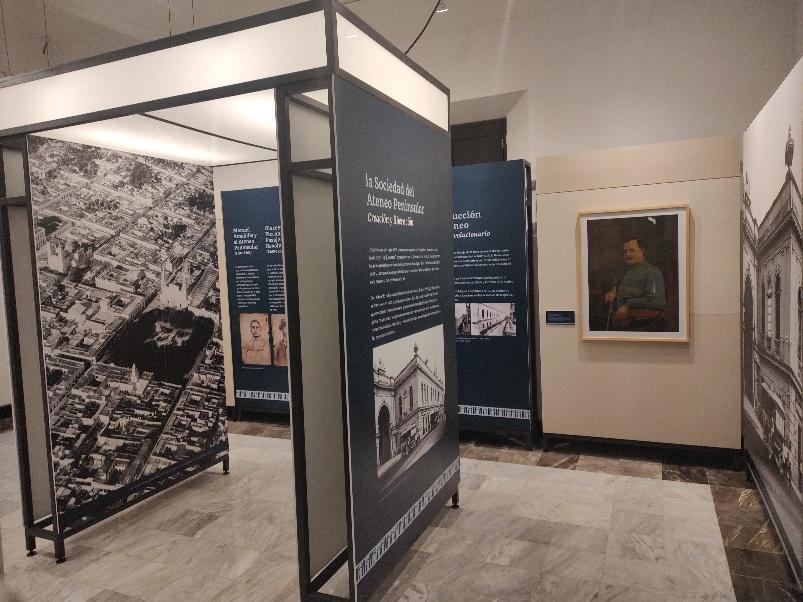Peninsular Athenaeum: Layers of Thought and Memory
Much more than just a building, the Peninsular Athenaeum preserves within its walls the traces of a rich and layered history. These stories are told in the Site Museum, where stone structures seem to speak, whispering tales of overlapping eras. Every architectural feature of this space links the present to a vibrant past that still echoes across the Yucatán Peninsula.
1. From T’Hó to Mérida: A Meeting of Worlds
By 1542, T’Hó—once a grand Maya capital—had already seen its golden age. Its inhabitants lived among towering pyramids and temples gradually reclaimed by nature. Following the Spanish conquest, T’Hó was transformed into the city of Mérida, marking the beginning of a new era. Stones from the ancient Maya city were reused to build the new colonial center. Its layout included the Main Plaza, which became the heart of religious, military, and civil power, represented by the Episcopal Palace, the Royal Houses, and the Grand Convent of San Francisco.
2. The Episcopal Palace: Heart of Ecclesiastical Power
Between 1536 and 1573, the Episcopal Palace was built as the seat of ecclesiastical authority in Yucatán, a role it would play for nearly four centuries. The founding of the diocese in 1549 and the arrival of Bishop Fray Francisco del Toral in 1561 ushered in a time of tension between Franciscan friars, the bishop, and civil authorities. The palace stood not only as a symbol of religious dominance but also as a stage for struggles over political and social control.
3. The Cathedral of Yucatán: Seat of the Diocese
Inaugurated in 1598, the Cathedral of Yucatán became a monumental testament to faith and unity. Its construction—financed by encomenderos, the royal treasury, and the hard labor of Indigenous peoples—was carried out during the reign of Philip II. The cathedral established itself as the spiritual and clerical center of the region.
4. The Seminary of San Ildefonso: Enlightening the Clergy
Founded in 1751 by Bishop Fray Buenaventura Martínez de Tejada, the Seminary of San Ildefonso was dedicated to educating the secular clergy. Over time, it also became a cradle of liberal thought, counting among its students notable figures such as Lorenzo de Zavala and Andrés Quintana Roo. The seminary’s closure in 1867, as a result of the Reform Laws, marked a significant turning point in Yucatán’s educational history.
5. The Peninsular Athenaeum: From Control to Liberation
In 1915, the Episcopal Palace was seized and transformed into the Peninsular Athenaeum, redesigned in neoclassical style by architect Manuel Amabilis. This transformation embodied the triumph of revolutionary and liberal ideals over clerical control. The Pasaje de la Revolución (Revolution Passage), inaugurated in 1918 by Giacomo Piccone, became an architectural and ideological symbol of this shift.
6. The Arts and the Athenaeum
Since 1916, the Athenaeum became a beacon for the arts and education. The founding of the School of Fine Arts, offering training in drawing, painting, and sculpture, marked a cultural revival. In 1994, the building evolved once again, becoming the Museum of Contemporary Art of Yucatán (MACAY), a space dedicated to showcasing contemporary art from Mexico and around the world.
7. A Living Legacy
Today, the Site Museum of the Peninsular Athenaeum remains more than a historical monument. It stands as a witness to the cultural and social transformations that have shaped Yucatán. From the ancient city of T’Hó to the present day, this remarkable site holds centuries of history, serving as a living bridge between past and present—an enduring invitation to explore, reflect, and connect.

